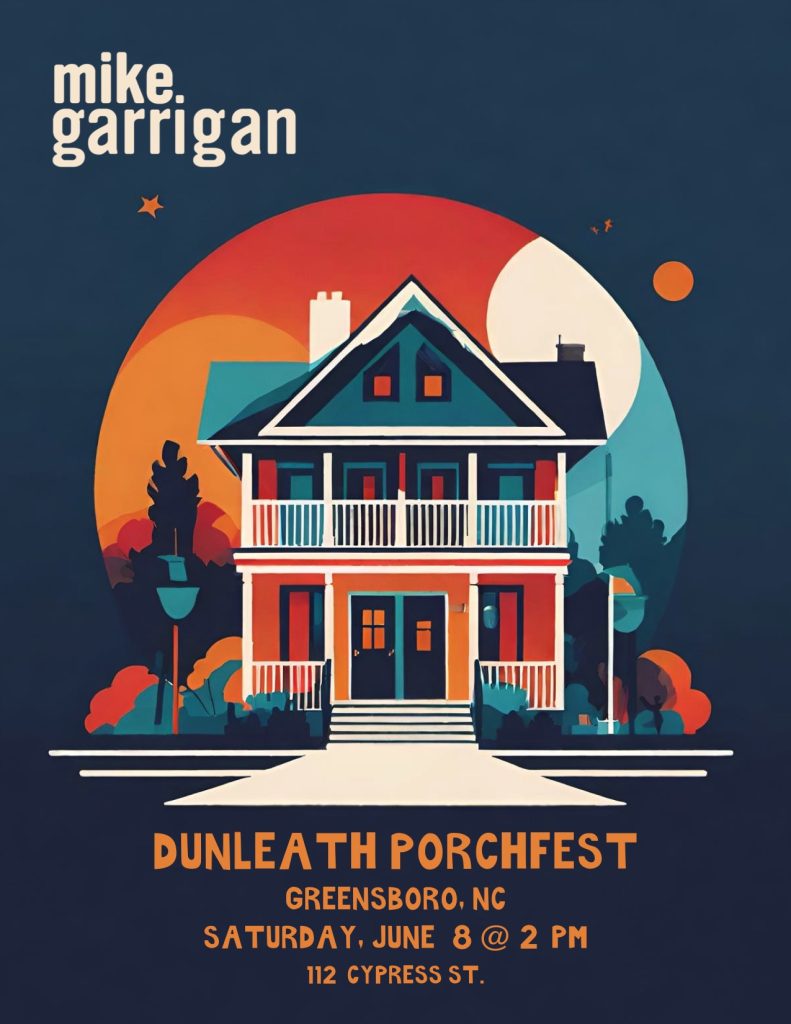
Blog Posts
Podcast – Production Lab: Experiment 2
onPodcast – Production Lab: Experiment 1
onDunleath Porchfest
onRibbon Mics
on
I purchased a pair of Cascade Fat Head II ribbon mics sometime in 2011. Some of the studios I had recorded in used ribbon mics on guitars and drum overheads. They always sounded pleasant and accurate. The Fat Heads I purchased came with a Blumlein stereo bar for mounting. I used the Fat Heads on a few drum recordings and a guitar recording or two. After their novelty wore off, I left them in their flight case for the better part of a decade. That is, until recently.
Back in December, I wrote 60 production prompts. The purpose of the prompts is to spark creativity. By limiting choices when working in a studio setting, new ideas emerge. At least, that’s the theory. One of the first prompts I drew was “record a song where everything must pass through a Fat Head II ribbon mic.” That type of limitation raised all kinds of questions for me. The first, and most relevant, was, exactly what is a ribbon mic and what does it do?
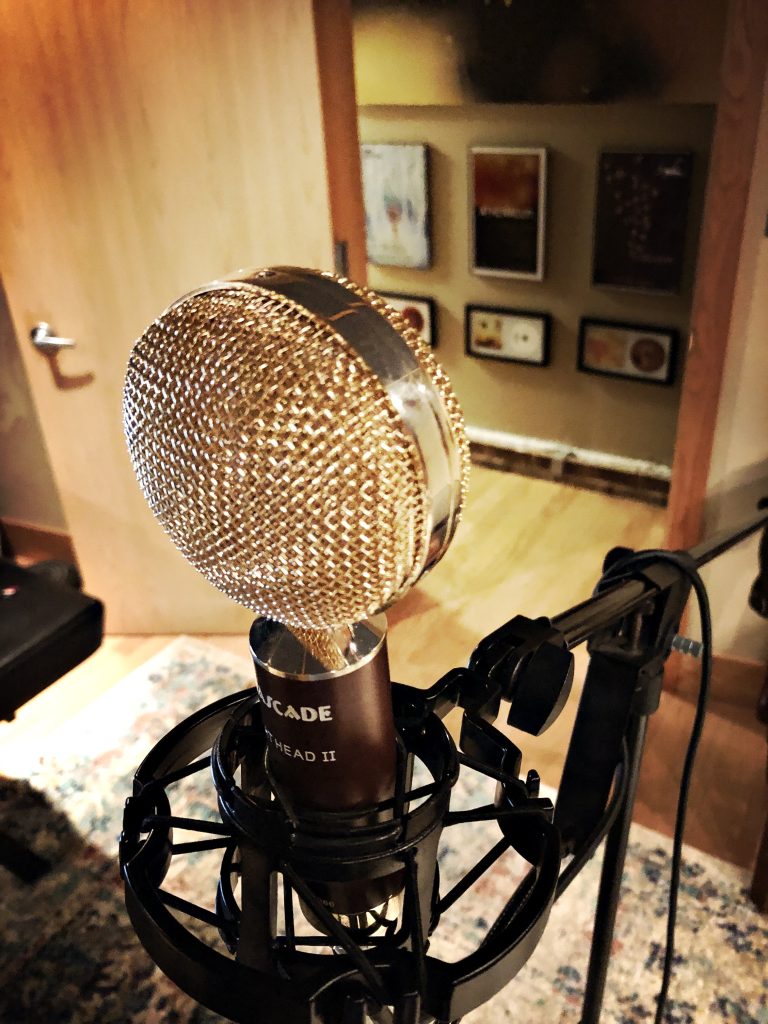
A ribbon microphone uses a ribbon of aluminum to capture sound. It serves as the microphone diaphragm, which captures changes in pressure. It’s also a transducer, which converts those changes into an electrical signal. By contrast, a dynamic microphone (think the regular stage mics that have a ball on the end), uses a metal coil as a transducer. The condenser microphone (think studio vocal mic that looks like a tube) uses a conductive membrane as a transducer. All three of these microphones have different general characteristics. A ribbon is usually warm, yet accurate. A dynamic mic is usually able to handle loud sources well. A condenser mic is usually bright and accurate–excellent for vocals, strings, and drum overheads.
Ribbon mics are delicate. If, for example, you accidentally leave the phantom power on when you plug in a ribbon mic, you may pop the ribbon from the energy in the line. Ribbon mics are not a panacea for recording ills, either. Sometimes, a ribbon mic is a bad choice on a given audio source, particularly if you don’t like the natural sound of what you are recording.
Using only a Fat Head II on a recording was a tremendous challenge. I look forward to eventually sharing songs that come from these creative prompts.
10pm Is the New Midnight
on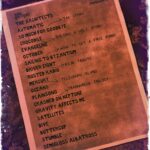
As I took the stage at the Flat Iron on Friday, February 9th, the clock approached 10 pm. I thought I was going on too early. But, as it would play out, the crowd thinned out over the next hour. In the last few songs of my set, I played to ten people. Listening back to the performance, it wasn’t like I sucked or anything like that. I guess asking people in their 40s and 50s to stay out until midnight is a big ask. It’s like 10 pm is the new midnight.
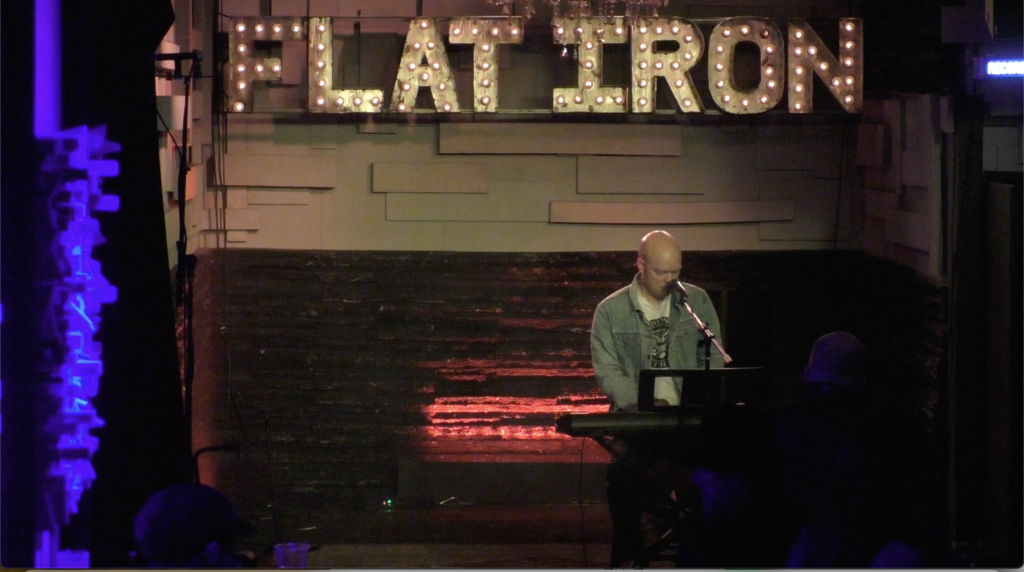
My setlist was an expansion of what I performed in Hillsborough a few weeks prior. I added a few songs and a few covers.
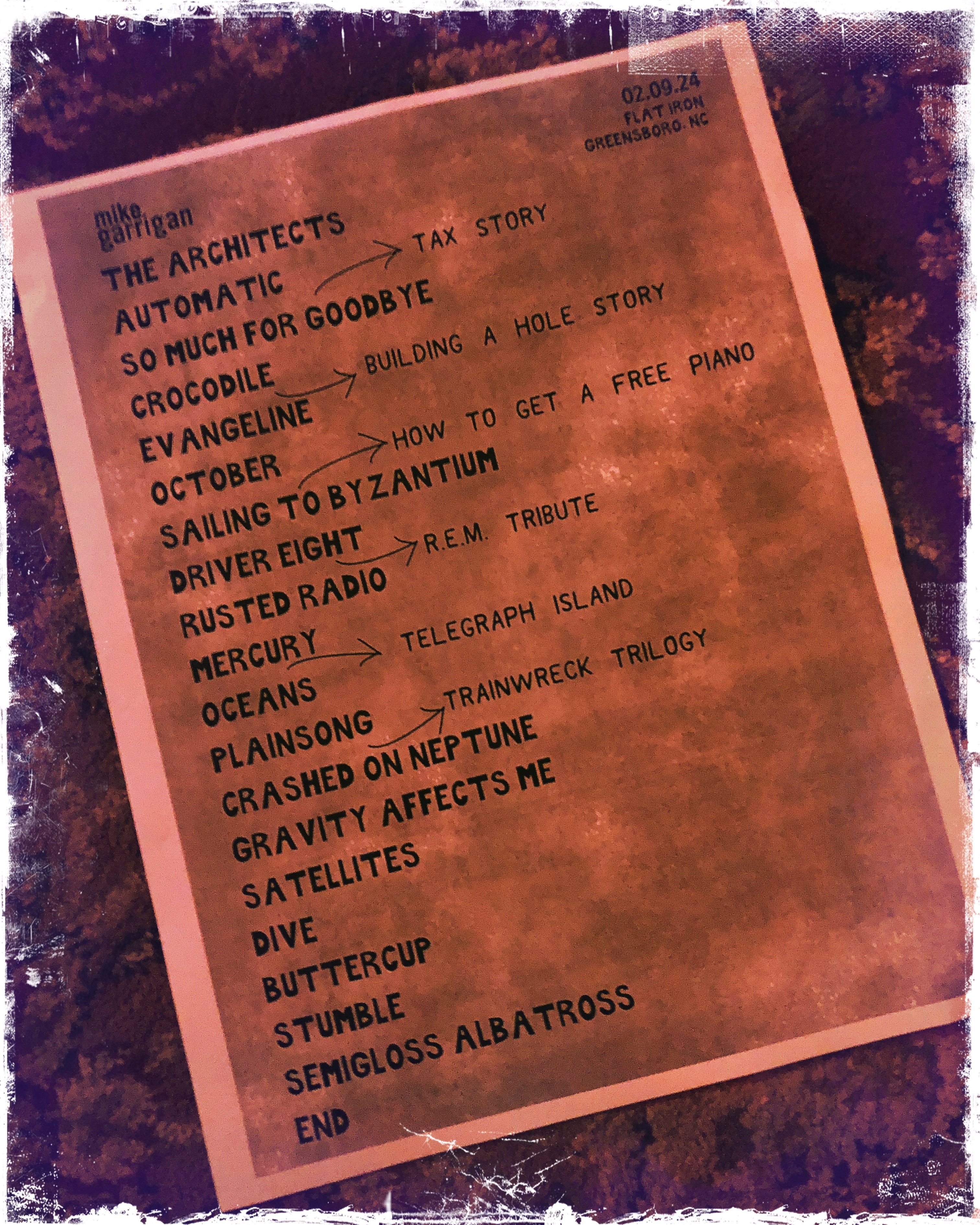
In spite of the challenges, I enjoyed this particular set. I got to play my usual gig piano, which ended up sounding pretty good. My favorite song of the night was “Sailing to Byzantium,” one of the more difficult songs to play on the piano. I ended up cutting three songs, “Oceans,” “Dive,” and “Stumble.”
Flat Iron Promo
on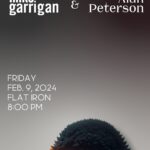
On Friday, February 9th, 2024, at 8:00 pm, I’ll be returning to the Flat Iron. I’ll be performing a co-bill with Alan Peterson. Tickets are available here.
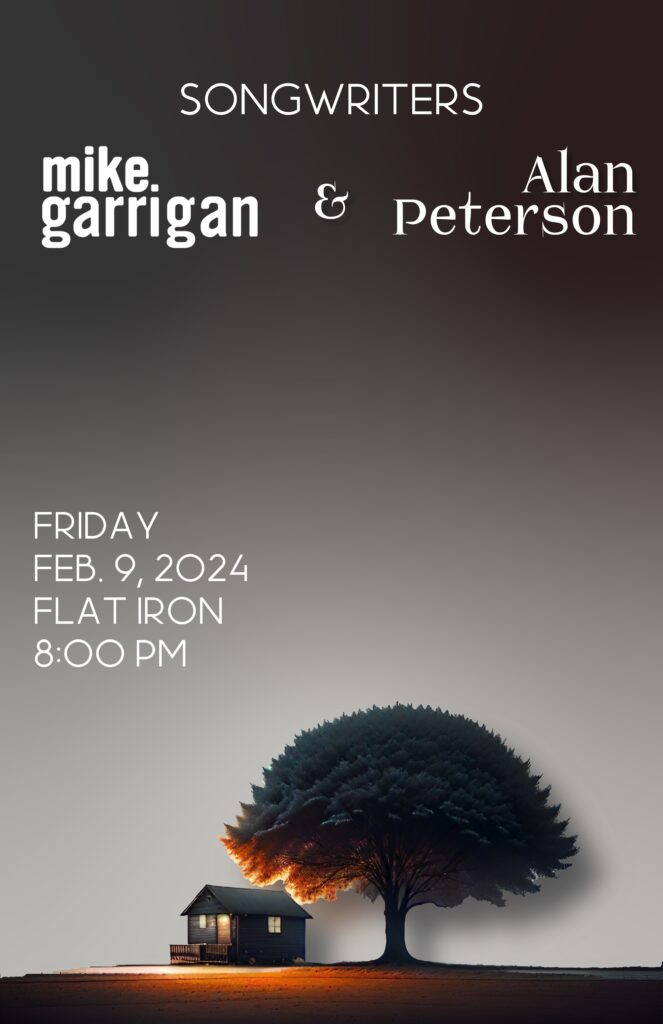
Coming off of a great set at the Eno House in Hillsborough, I look forward to playing a slightly longer piano set. Please join us if you can.
At the Eno House Artist’s Den
on
On Thursday, January 25, 2024, at the Eno House Artist’s Den, I played my first show of the year. I opened for Nikki Meets the Hibachi and played for about 45 minutes.
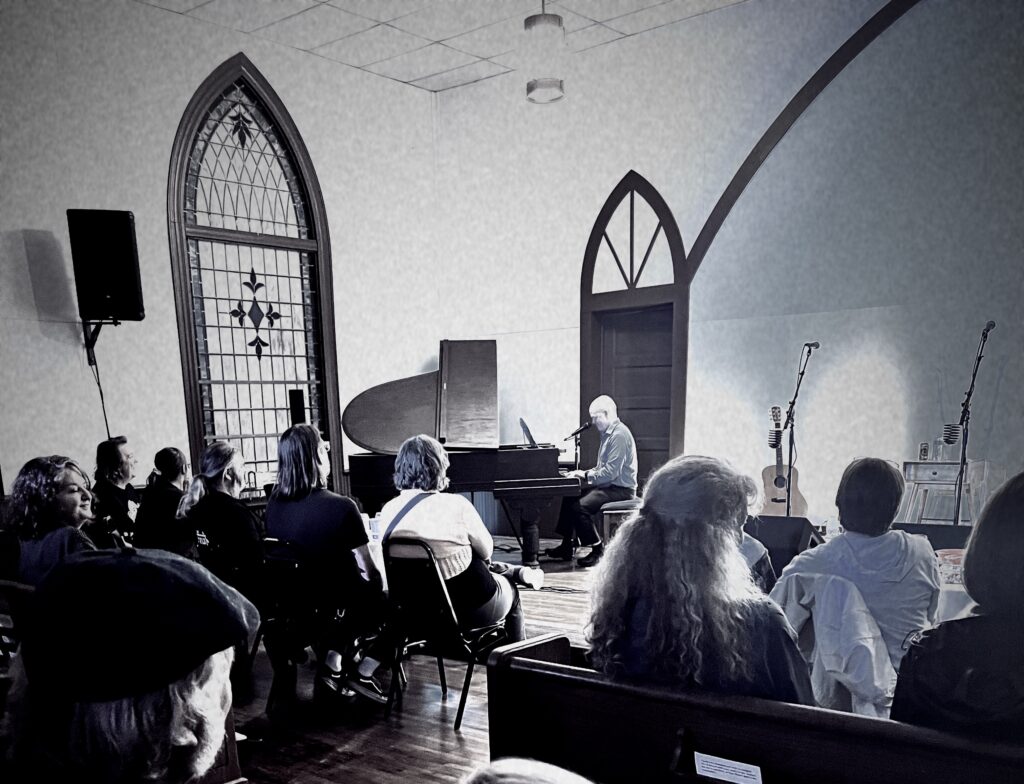
I hadn’t ever performed at Eno House, so I had no idea of what to expect. I arrived straight from work. I caught a little rain on the way but had no stuffy traffic. Waze took me directly to the the venue without issue. I parked right in front. When I got there, John and Elaine from Nikki were finishing up their soundcheck. The club owner invited me to play the house Steinway piano, which I welcomed.
I checked a few songs and felt comfortable with how things sounded. Playing an unfamiliar piano comes with its own challenges. A real, live piano is a living, breathing thing. It has its own personality, its own temperament. My Yamaha travel piano has weighted keys but no personality and the temperament of a koala bear. The piano at Eno House was like a strong but delicate tree. Each key was weighted just a little differently from another.
After soundcheck, I enjoyed catching up with folks I hadn’t seen in ages. The last time I opened for Nikki was thirty years ago at the Skylight Exchange in Chapel Hill, NC. People arrived in twos and threes and mingled, talking of times past.

A piano/vocal set is something that would be difficult for me to play on the fly. I planned out my setlist a month in advance and had it in stone the week before. I’m new to piano as a performing instrument. It’s not like guitar for me, which I sometimes zone out on while playing. The set had a nice design, too. I put four familiar songs among the unfamiliar ones. I played two new songs, “Evangeline” and “Crashed on Neptune,” as well as “Satellites.”
I’ve missed playing out live. I haven’t been performing as much as I like to and I look forward to more shows this year. Recording is fun and all. Playing online venues has its place. But playing original songs live to a room full of people who are actually listening is sacred. Coincidentally, Eno House used to be a church.
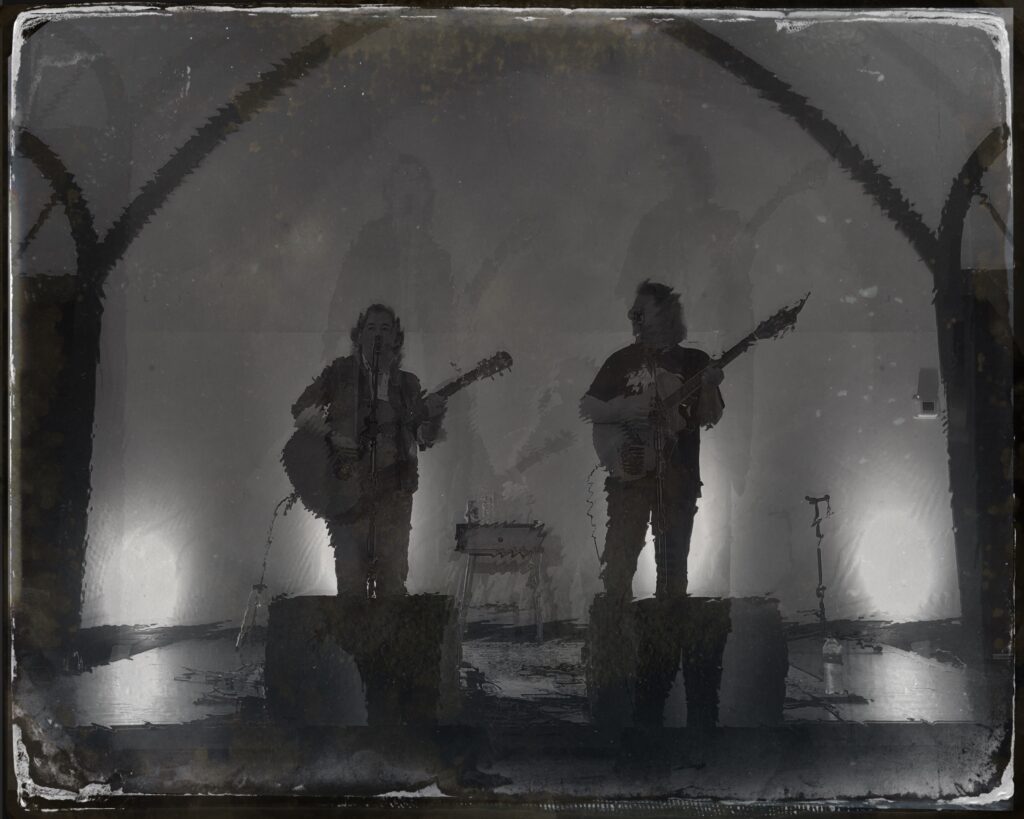
Gremlins Ransacked My Website
on
After uploading my latest podcast, the last thing I expected was a total website failure.
A 500 Internal Server Error occurs when a web browser can’t access a website because of a problem with the code. Apparently, gremlins ransacked my website. But how? I have two-factor authentication, or “2FA” as they call it. I get a code sent to me whenever I login to my site. I send the code back and it verifies to the server that it’s me who’s logging in.
Puzzled, I contacted tech support. They responded quickly. But, the solution they provided was even more baffling. They said I needed to comb through thousands of lines of code and delete the malicious data. But it was important that I didn’t delete code that I actually needed.
Um . . . Ok?
I opened up a code editor for kicks to see if finding malicious code was something I could do. Not surprised, I had no idea what I was doing. None. The next day, I found a web company that advertised being able to fix general WordPress issues. I signed up for their service. They fixed the problem in about two hours for a reasonable price. Thank you, fixed.net.
The problem, as I learned, was that some of my plugins hadn’t been updated in a while. Un-updated plugins aren’t compatible with current versions of WordPress. I don’t understand how un-updated plugins are vulnerable to hacking, but that’s what happened.
Lesson learned, I guess.
TL;DR – Update your website plugins. The site you save may be your own.
